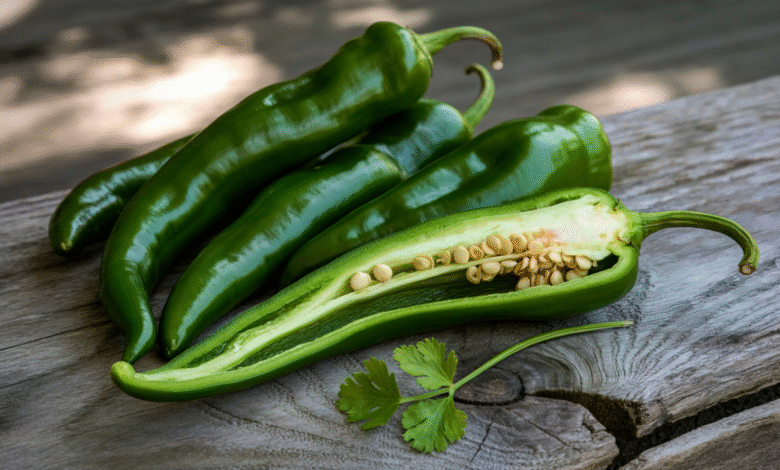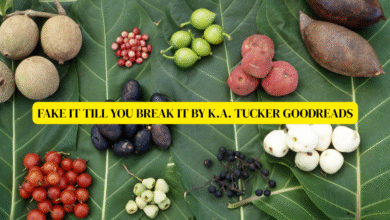Serrano Peppers: Flavor, Heat, and How to Use Them in Everyday Cooking

When I first tried a serrano pepper, it was in a homemade salsa my friend’s mother made during a summer barbecue. I had eaten jalapeños before, so I thought I knew what to expect. But the serrano hit differently. It had a sharper heat, brighter flavor, and it lingered on my tongue in a way that made me want another bite rather than run for a glass of milk. That moment made me curious about this chili, and over the years I’ve cooked with it, grown it in my small backyard garden, and even pickled jars of them to enjoy during the winter.
If you’ve ever seen serrano peppers at the grocery store or a farmer’s market and wondered how they’re different from jalapeños or how to use them in your cooking, this guide will walk you through everything you need to know.
What Are Serrano Peppers?
Serrano peppers are small, slender chili peppers that originate from the mountainous regions of Puebla and Hidalgo in Mexico. The word “serrano” actually comes from “sierra,” meaning mountains, which reflects where these peppers naturally grow.
They are usually two to four inches long, smooth-skinned, and often green when picked, though they can ripen to red, orange, yellow, or even brown. Unlike jalapeños, which have a slightly thicker flesh, serrano peppers are thinner but pack more heat.
The flavor is crisp, fresh, and almost grassy, which makes them especially good in salsas and fresh toppings. They are a staple in Mexican cuisine and increasingly popular in kitchens worldwide.
How Hot Are Serrano Peppers?
The heat of a chili is measured on the Scoville scale, which tells us how much capsaicin (the compound that gives peppers their spiciness) they contain. Serrano peppers typically range between 10,000 and 25,000 Scoville Heat Units (SHU).
To put that in perspective:
-
A jalapeño is usually between 2,500 and 8,000 SHU.
-
A cayenne pepper is around 30,000 to 50,000 SHU.
-
A habanero can skyrocket to 100,000 to 350,000 SHU.
So serranos are hotter than jalapeños but not nearly as fiery as habaneros. For most people, serranos hit that sweet spot of being spicy enough to wake up your taste buds without completely overwhelming a dish.
Handling Tip: If you’re sensitive to spice, always wear gloves when cutting serrano peppers and avoid touching your eyes. The oils can linger on your skin even after washing.
Read Also: Alvin and the chipmunks 2007 cast
Cooking with Serrano Peppers
One of the reasons I love serrano peppers is their versatility. They can be eaten raw, cooked, roasted, or pickled, and each preparation brings out a different side of their flavor.
-
Raw: Thinly slice them into salads or use them as a garnish for tacos.
-
Cooked: Add to stir-fries, soups, or roasted vegetable dishes.
-
Roasted: Charring them enhances their smoky side, perfect for salsas.
-
Pickled: Preserves them for months and balances their heat with tangy vinegar.
Example: Fresh Serrano Salsa Recipe
When I’m in a rush but want something flavorful, I blend together:
-
3 serrano peppers (adjust to taste)
-
2 ripe tomatoes
-
1 clove of garlic
-
1/4 onion
-
Juice of half a lime
-
Salt to taste
This salsa takes five minutes to make and can transform plain grilled chicken, scrambled eggs, or even a bowl of rice into something exciting.
Nutrition and Health Benefits
Serrano peppers aren’t just about heat. They’re surprisingly nutritious. A 45-gram serving (roughly one medium pepper) contains:
-
Just 5 calories
-
Almost no fat
-
A good amount of Vitamin C (supports immune health)
-
Vitamin A (good for skin and vision)
-
Capsaicin, which has anti-inflammatory properties
Health Benefits:
-
Boosts metabolism: Capsaicin can slightly increase calorie burning.
-
Supports immunity: High vitamin C content helps fight infections.
-
Heart health: Some studies link chili consumption to better circulation.
Caution: Eating too many serranos on an empty stomach can cause irritation. I’ve learned this the hard way when I once added three raw serranos to a smoothie (don’t recommend it). Moderation is key.
Growing Serrano Peppers at Home
If you enjoy gardening, serrano peppers are fairly easy to grow. I started mine in pots on my balcony a few summers ago, and they did really well in Montreal’s warm season.
-
Sunlight: They need at least 6-8 hours of direct sunlight daily.
-
Soil: Well-draining soil with compost works best.
-
Watering: Keep the soil moist but not soggy.
-
Harvesting: Pick when they are firm and about 3 inches long. They’ll continue to ripen even after being picked.
I found that my serrano plants produced far more than I could use fresh, which led me to experiment with pickling and freezing. Both methods kept the peppers usable for months.
Best Substitutes for Serrano Peppers
Sometimes recipes call for serranos, but you can’t find them. Here are good substitutes:
-
Jalapeño: Milder, more widely available.
-
Thai chili: Much spicier but similar in size.
-
Cayenne: Works well dried or powdered.
-
Habanero: Use with caution, much hotter.
I often swap in jalapeños when cooking for friends who can’t handle too much heat. If I want a challenge, I use Thai chilies.
Storing and Preserving Serrano Peppers
Fresh serranos last about a week in the fridge. For longer storage:
-
Freezing: Wash, dry, and freeze whole or sliced.
-
Pickling: Vinegar, water, salt, and spices can preserve them for months.
-
Drying: Hang or use a dehydrator, then crush into chili flakes.
Personally, I love freezing them. It’s quick, and the peppers still taste great when cooked.
Conclusion
Serrano peppers bring a perfect mix of heat, freshness, and versatility to the kitchen. Whether you’re making a bright salsa, adding kick to a soup, or trying your hand at growing them at home, they’re worth keeping on hand. They’re healthier than many people realize, and with so many ways to prepare and store them, serranos can become a staple in your cooking too.
FAQs
Are serrano peppers hotter than jalapeños?
Yes, usually 2-4 times hotter.
Can you eat serrano peppers raw?
Absolutely, though they are quite spicy raw.
How can I make serrano peppers less spicy in cooking?
Remove the seeds and inner membrane, or balance them with dairy or sweetness.
Are serrano peppers healthy for weight loss?
Yes, they’re low-calorie and may boost metabolism.
What is the best substitute for serrano peppers?
Jalapeños for milder heat, Thai chilies for more spice.



